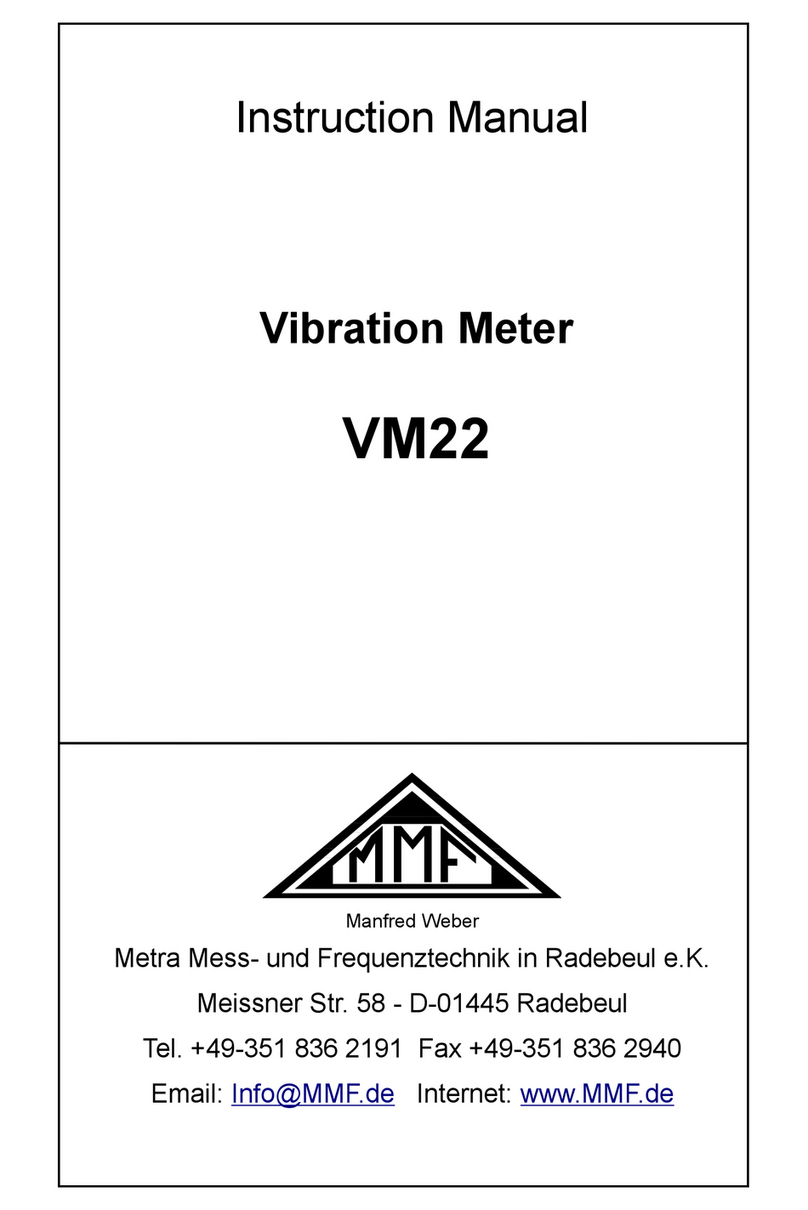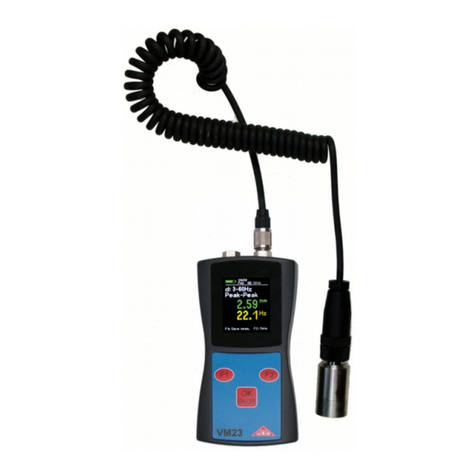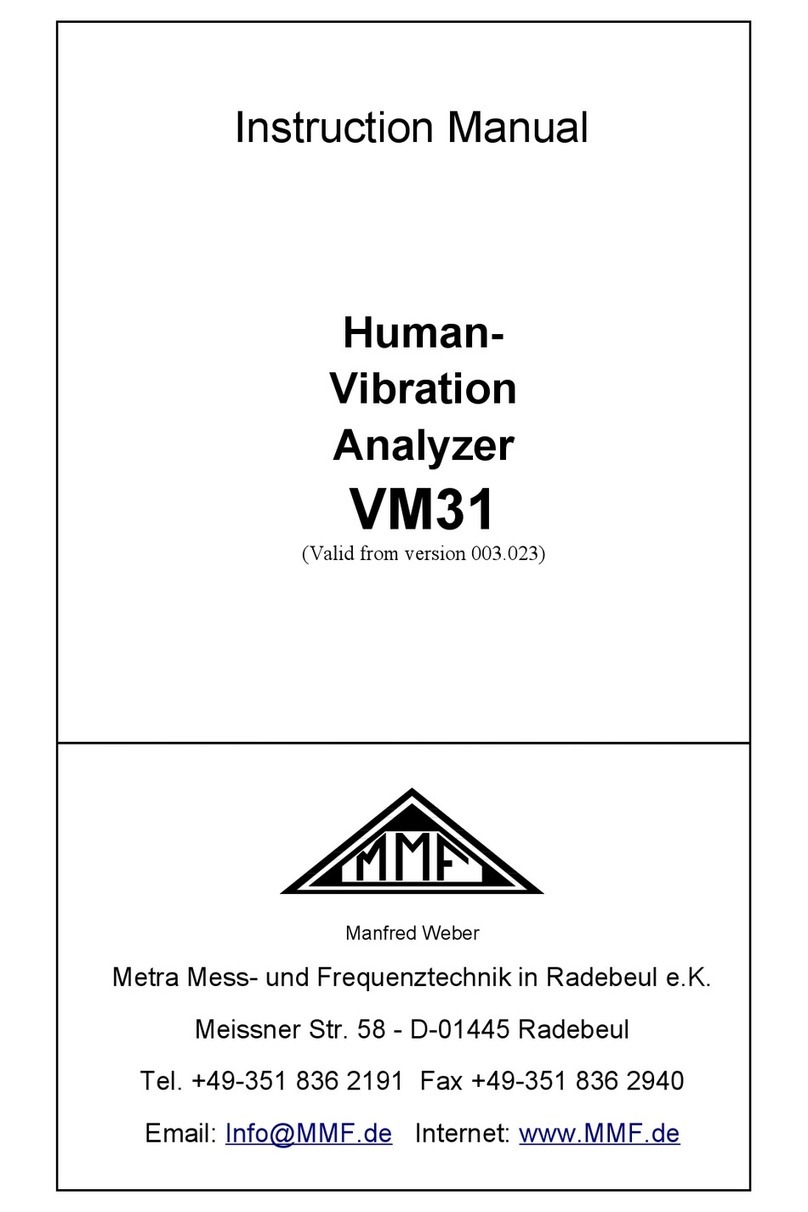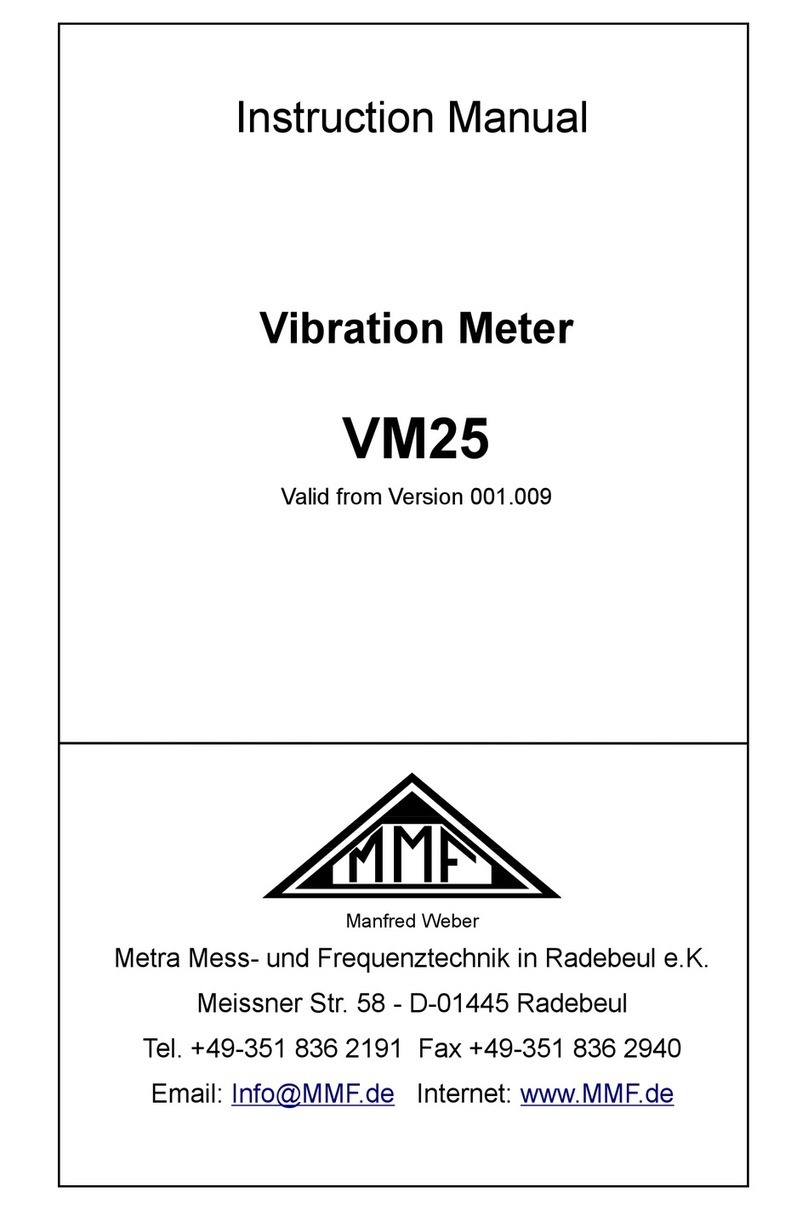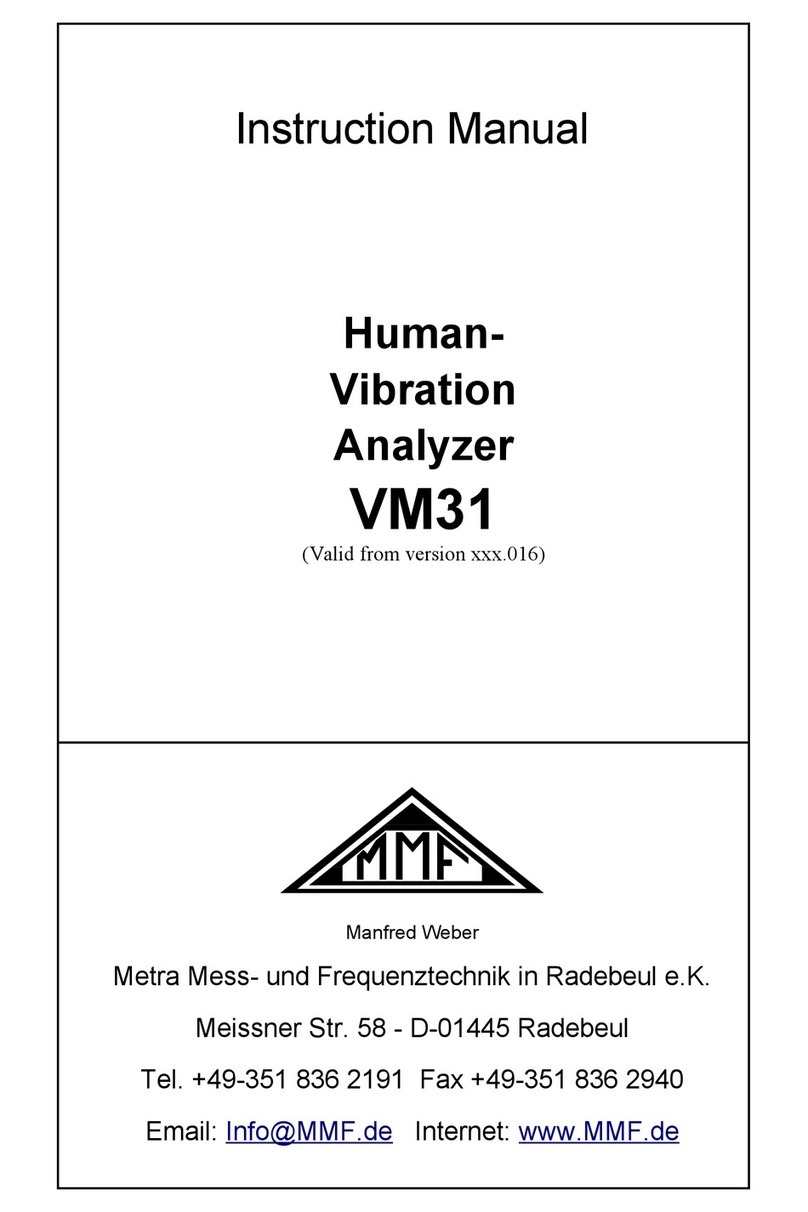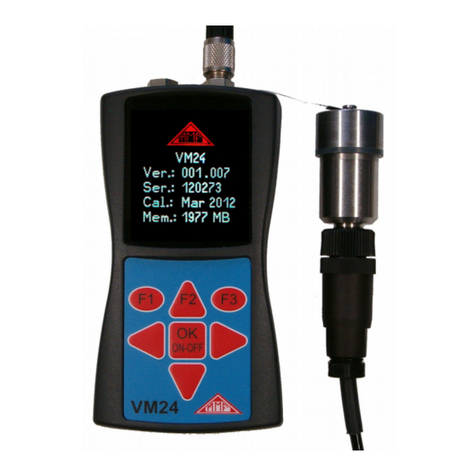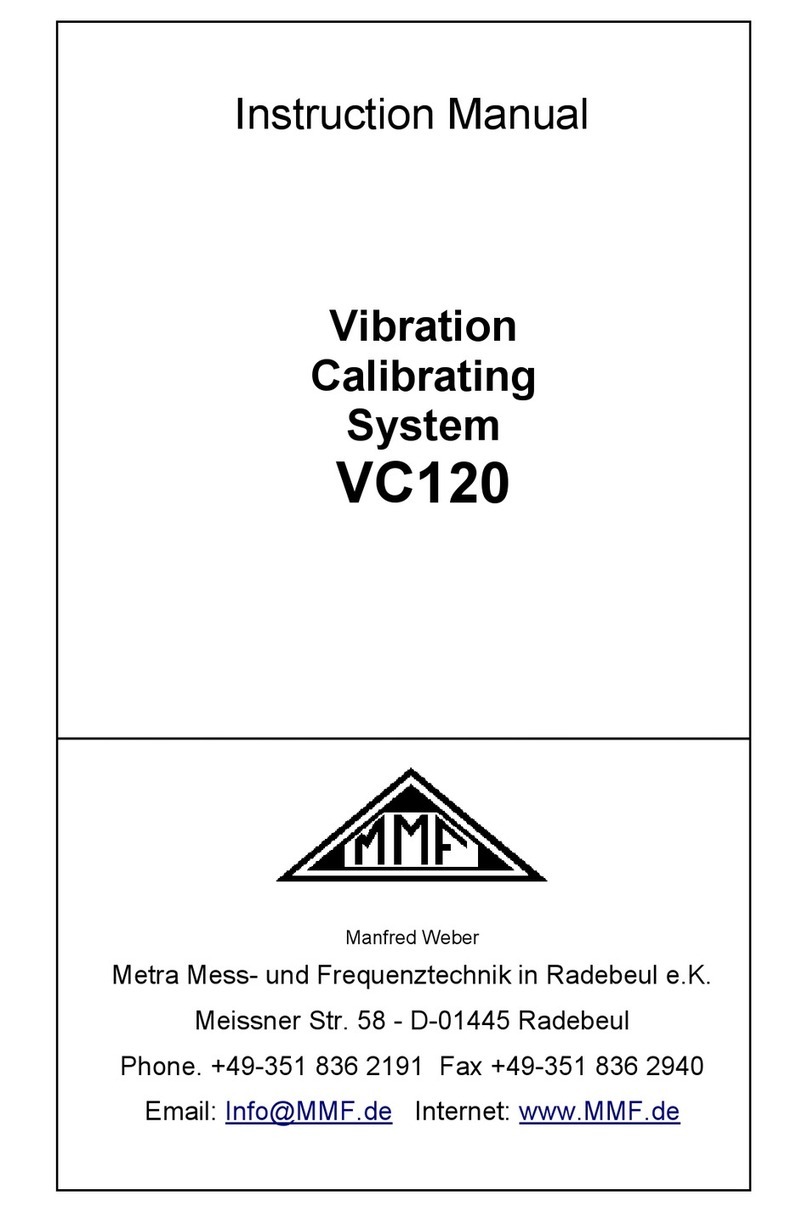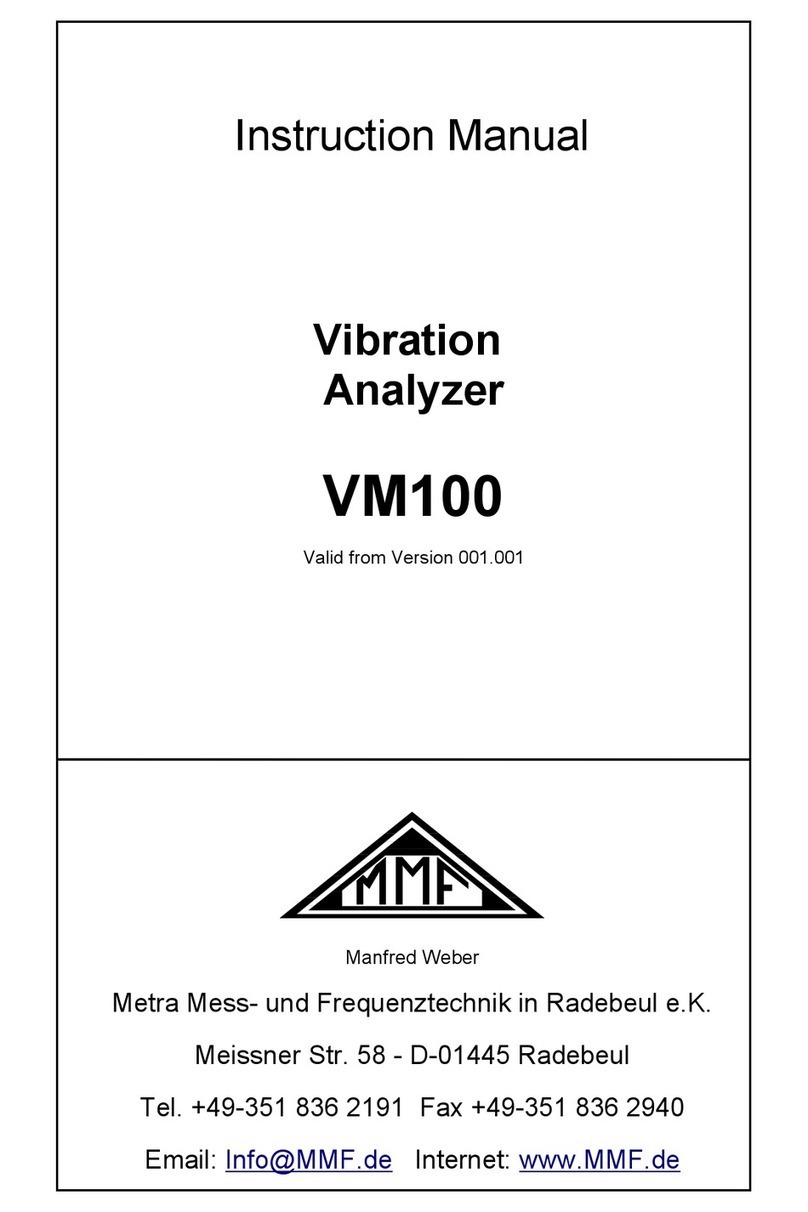9.3.4. Estimated Vibration Dose Value (eVDV).................................................................25
9.3.5. Vibration Total Value (Ahv).....................................................................................26
9.3.6. Peak Value (PEAK)..................................................................................................26
9.3.7. Maximum Peak Value (PEAK↑)...............................................................................27
9.3.8. Crest Factor (CREST)...............................................................................................27
9.4. Saving User-Defined Setups............................................................................................27
9.5. Loading User-Defined Setups..........................................................................................28
10. Measuring Range and Autoranging......................................................................................28
11. Overload Indication..............................................................................................................29
12. Saving Measuring Results....................................................................................................29
12.1. Manual Recording by the SAVE Key............................................................................29
12.2. Automatic Recording in the Data Logger Mode............................................................30
12.3. Viewing Saved Measurements on the Display...............................................................30
13. Data Transmission to the PC................................................................................................31
13.1. Preparing the Import of Data into Excel........................................................................31
13.2. Importing VM30-H Data with the Excel Macro ...........................................................31
13.3. Calculation of the Daily Exposure Value A(8)..............................................................33
13.4. Function of the Excel Macro ........................................................................................36
13.5. Transmission to PC by a Terminal Program..................................................................37
14. Time and Date......................................................................................................................38
15. Calibration and Function Check...........................................................................................39
15.1. Entering Transducer Sensitivities .................................................................................39
15.2. Sensitivity Calibration by a Vibration Calibrator ..........................................................39
15.3. Mechanical Calibration..................................................................................................40
15.4. Electrical Calibration.....................................................................................................40
15.5. Function Check..............................................................................................................43
16. Other Settings ......................................................................................................................43
16.1. Beep Sound On / Off.....................................................................................................43
16.2. Automatic Shut-Off Timer.............................................................................................44
16.3. Battery Type..................................................................................................................44
16.4. Factory Settings.............................................................................................................44
16.5. Baud Rate......................................................................................................................44
17. Serial Interface.....................................................................................................................44
18. Signal Output.......................................................................................................................44
19. Power Supply.......................................................................................................................45
19.1. Battery Operation..........................................................................................................45
19.2. External Supply.............................................................................................................46
20. Loading Default Settings......................................................................................................46
21. Hardware Reset....................................................................................................................46
22. Hardware and Firmware Versions .......................................................................................47
23. Firmware Update .................................................................................................................47
24. Questions and Answers........................................................................................................49












